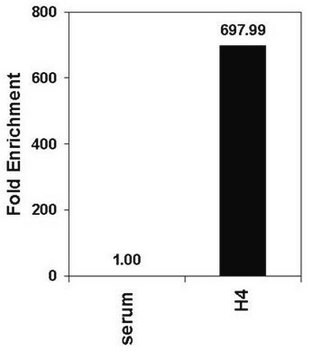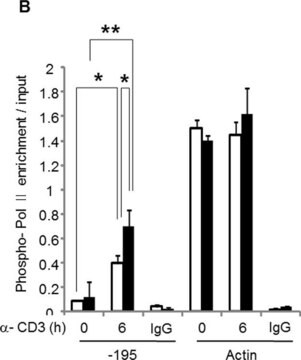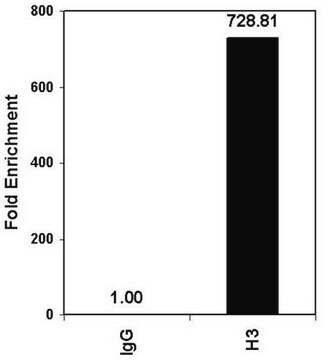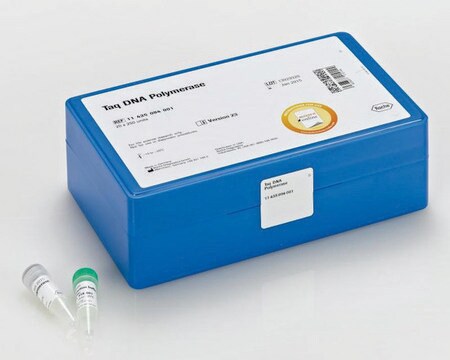17-620
ChIPAb+ RNA Pol II - ChIP Validated Antibody and Primer Set
from mouse
Sinônimo(s):
Chip Antibody and primer set, DNA-directed RNA polymerase II subunit RPB1, RNA polymerase II, RNA polymerase II ChIP
About This Item
Produtos recomendados
fonte biológica
mouse
Nível de qualidade
clone
monoclonal
reatividade de espécies
rat, Saccharomyces cerevisiae, mouse, human
fabricante/nome comercial
ChIPAb+
Upstate®
técnica(s)
ChIP: suitable
immunofluorescence: suitable
immunoprecipitation (IP): suitable
Isotipo
IgG1
nº de adesão NCBI
nº de adesão UniProt
Condições de expedição
dry ice
Descrição geral
The ChIPAb+ RNA Pol II set includes the RNA Pol II antibody, the negative control antibody (mouse IgG), and qPCR primers flanking the human GAPDH promoter, yielding a 166 bp product. The RNA Pol II and negative control antibodies are supplied in a scalable "per ChIP" reaction size and can be used to functionally validate the precipitation of RNA Pol II associated chromatin.
Especificidade
Imunogênio
Aplicação
Epigenetics & Nuclear Function
Chromatin Biology
3T3 nuclear extract was resolved by electrophoresis, transferred to nitrocellulose and probed with anti-RNA polymerase II (0.1 μg/mL). Proteins were visualized using a goat anti-mouse secondary antibody conjugated to HRP and a chemiluminescence detection system (Please see figures).
Embalagem
Qualidade
Descrição-alvo
forma física
Normal Mouse IgG. One vial containing 25 ug of mouse IgG in 25 μL volume. Store at -20°C.
Control Primers p21. One vial containing 75 μL of 5 μM of each primer specific for a region of the human GAPDH promoter. Store at -20°C.
FOR: TAC TAG CGG TTT TAC GGG CG
REV: TCG AAC AGG AGG AGC AGA GAG
CGA
Armazenamento e estabilidade
Nota de análise
Included negative control antibody mouse IgG and control primers specific for human GAPDH.
Informações legais
Exoneração de responsabilidade
Código de classe de armazenamento
10 - Combustible liquids
Certificados de análise (COA)
Busque Certificados de análise (COA) digitando o Número do Lote do produto. Os números de lote e remessa podem ser encontrados no rótulo de um produto após a palavra “Lot” ou “Batch”.
Já possui este produto?
Encontre a documentação dos produtos que você adquiriu recentemente na biblioteca de documentos.
Nossa equipe de cientistas tem experiência em todas as áreas de pesquisa, incluindo Life Sciences, ciência de materiais, síntese química, cromatografia, química analítica e muitas outras.
Entre em contato com a assistência técnica








